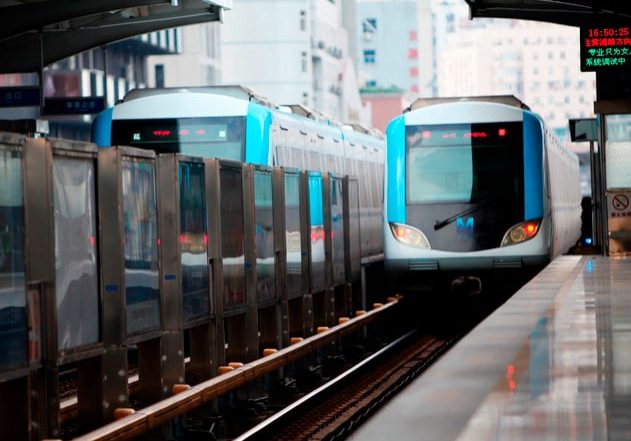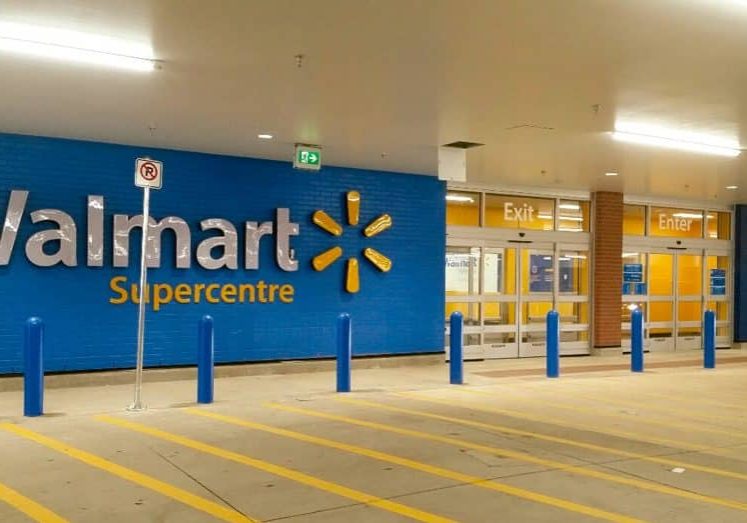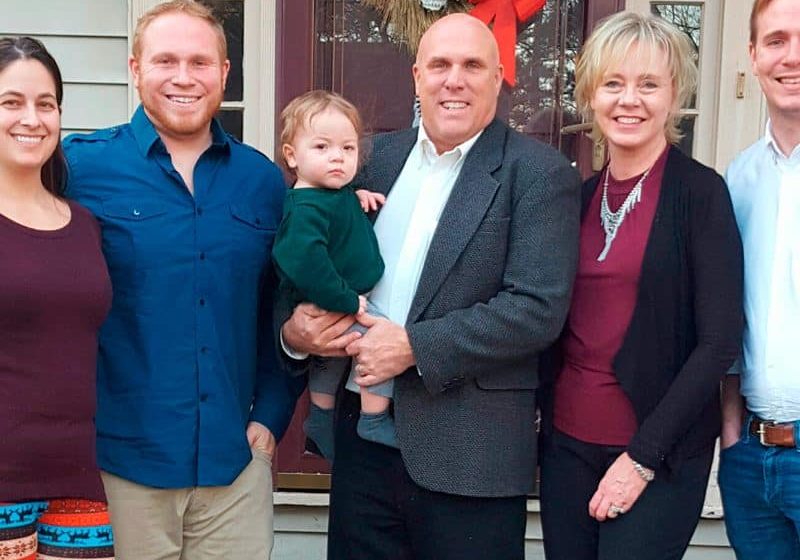Mid-Atlantic
Mar 1, 2017

The region that includes the Northeast megalopolis is keeping vertical-transportation companies busy, and the outlook is bright.
New York, New Jersey, Pennsylvania, the District of Columbia and Maryland: all are generating plenty of work these days for the big OEMs, independents, consultants and suppliers. Many describe 2016 as the best year they’ve seen since 2008, and the outlook for the next five years is bright, including developments related to the administration of new U.S. President Donald J. Trump.
“2016 was a record year for all of our businesses, and orders finally surpassed 2008 numbers,” says Doug Witham of GAL Manufacturing Corp., whose businesses primarily operate in the modernization segment. He observes:
“Improvements came more quickly to the Northeast than they did to other parts of the country. The feedback from consultants about their backlog makes us believe that 2017 will be another record year. The industry’s contractors, especially those in the Northeast, should be running at full capacity.”
The optimism extends beyond the Northeast proper (which includes New York, New Jersey and Pennsylvania)[1] to Delaware; the Washington, D.C. metro area; and Baltimore, where Consolidated Electrical Distributors (CED), an electrical and elevator parts supplier with deep roots in the U.S. West, is soon opening a Baltimore location. “It’s something that corporate researched for about a year, and they felt this was a very robust, promising location,” says Joe Lamendola, account manager of the new office, which will be focused on elevator parts.
What is driving work runs the gamut, as reflected by Otis’ observations. “We are seeing growth in all areas, especially projects near metro stations such as offices, residential buildings and hotels, says Joe Frask, regional vice president, Eastern Region, Otis Americas.” Otis has had a stake in the region for more than 100 years, with the company debuting the first elevator installation in New York City (NYC) in 1857.
Otis notes the NYC market remains just as vital today, with an array of significant projects in the pipeline, particularly in Midtown NYC, where residential supertalls in excess of 80 stories are going up. In NYC’s newest neighborhood, the New West Side, the multiple-tower, mixed-use Hudson Yards represents the heart of an area that is positively crackling with activity. Whether it is related to new or modernized systems, Otis reports there is demand for high-tech features such as its CompassPlusTM destination-dispatch system.
Donald Zeni, Schindler’s area sales manager for greater NYC, agrees, stating that NYC, D.C. and Philadelphia are often the first to embrace new technology, including Schindler’s PORT destination-dispatch and machine-room-less (MRL) elevator technology, to uphold their reputations as world-class cities. “NYC has a slightly lower appetite for MRLs because many buildings exceed the height limit for their specifications,” he notes.
Launched in the U.S. in 2016, Schindler’s myPORT smartphone-based service takes PORT to the next, personal level and is being embraced in the major Mid-Atlantic cities, Zeni says. “The smartphone-based application provides a seamless four-step identity verification upon entry, ‘e-banking’-level security and allows users to move more efficiently through buildings just by keeping their smartphones handy,” he notes.
While MRL systems may not be an option in many parts of the Big Apple, they certainly are in D.C. Council on Tall Buildings and Urban Habitat (CTBUH) Communications Manager Jason Gabel observes that height restrictions in the D.C. area require any significant new development to be shorter than 40 m. But a lack of tall buildings hardly means there is nothing for elevator providers to do in D.C. Encompassing surrounding suburbs in Northern Virginia (such as Tyson Corner, Arlington and Fairfax) and Bethesda, Maryland, the D.C. metro is very active and competitive with both private and government projects. Players there are optimistic about what the Trump administration will mean for their businesses.
Delaware Elevator, Inc. has seen notable success in the D.C./northern Virginia area, having worked on projects that include government and military schools, hospitals and museums. CEO Pete Meeks says this market is likely to improve, stating:
“The economy is driven by large Army, Navy and Air Force presences, and I think the Trump administration is going to free up some money for additional military spending. On the private side, I think he is going to keep interest rates low and lending available. With the new administration, I think there will be greater tax incentives and more of a pro-business environment.”
Delaware’s market is, “first and foremost,” NYC, then D.C./northern Virginia, followed by Philadelphia and Pittsburgh, which Meeks describes as “all strong.” Across the board, he says, “we may have a dip here and there, but I don’t think we are going to see 2008 again. There will be strong, continued growth over the next four years, at least with this administration.”
Pennsylvania’s main cities, Philadelphia and Pittsburgh, are thriving thanks to a continued trend toward urbanization and tech-savviness. While NYC may immediately spring to mind as one of the most high-tech cities in the world, these are not far behind, Otis notes. According to Frask:
“With several high-profile tech companies establishing themselves in Pittsburgh — including Google and Uber — there has been an increased interest in technology. We are seeing this across the board in the Mid-Atlantic region, and more and more buildings are embracing Otis’ CompassPlus destination-dispatch technology.”
A Good Problem to Have
No matter which products and services they provide and regardless of company size, the professionals your author spoke with for this piece are very busy. “It’s great to be busy, but a little stressful, too,” observes Doug Boydston of Handi-Lift, Inc., an independent based in Carlstadt, New Jersey, that specializes in custom accessibility lifts, mostly related to renovations. “We need more help, and that is hard to find,” he says.
Handi-Lift’s current projects are a glass lift in the Tiffany Exhibit at the New York Historical Society Museum and Library and a custom lift in the Museum of the City of New York. It is also building custom lifts for the Philadelphia Art Museum and the American Enterprise Institute, a D.C. think tank, which gutted and renovated a historic building near Dupont Circle.
Handi-Lift’s core markets are NYC, the southern counties of New York state and the northern counties of New Jersey, but it does custom work all over the U.S. It has jobs now in Philadelphia and D.C., and, across the board, demand for custom work is up, Boydston says. “We went through a terrible downcycle from 2006-2010, and then a recovery from 2010-2014 to get back to where we were,” he says. “The past two years have seen steady growth, and we do not see any signs of a slowdown.” Looking specifically at NYC, Boydston says:
“NYC has been going strong for some time. However, while construction, including renovation, is still strong in NYC, there are some restrictions in our market as the NYC Building Code, when updated in 2014, left out regulations for vertical and inclined platform lifts in existing buildings, i.e., pre-code buildings.
“We also do a lot of replacements, so if alteration markets decline, there is still a lot of work to do replacing lifts that don’t work or can’t be repaired effectively, as the manufacturers are out of business. When ThyssenKrupp Access went down, they took out Cheney, Access Industries and National Wheel-O-Vator, so folks with old lifts by these companies were up a creek, so to speak. Our service department is growing steadily, as well, due to aging equipment.”
Hotspots and Trends
Elevator companies are seeing spikes in activity related to the revitalization of old neighborhoods and old buildings and a shift toward private versus public projects throughout the Mid-Atlantic region. Boydston observes that although projects are happening throughout NYC’s five boroughs, downtown Brooklyn seems to be hottest right now.
Elaborating on that, Joe Neto, Lerch Bates Inc. president for the New York area, states:
“While Manhattan is booming with new construction and modernization work, Brooklyn and Queens are not far behind on new design work. There is a tremendous amount of new and mixed-use residential buildings going up throughout these three boroughs.”
These buildings are driving business for all types of elevator companies, from “one-stop-shop” outfits to suppliers of the most esoteric of components. For that reason, Archi-Tread, Inc. owner Scott Akin is optimistic about the future of his two-year-old Kinnelon, New Jersey-based company, which supplies elevator cab and hoistway sills. Recent projects include 4 Times Square (the former Condé Nast building) and 388 Greenwich Street in NYC, and the Dirksen Senate Building in D.C. Akin says business is an even mix between new construction and modernization. With the five boroughs of NYC particularly active, “the outlook is positive for the next five years,” he says.
Rick Kennedy, CEO of Kencor, Inc. Elevator Systems, observes that five- to six-story buildings in gentrifying parts of Philadelphia and the NYC suburbs are being reclaimed and converted into apartments. This extends to smaller New Jersey cities such as New Brunswick, Jersey City and Hoboken, he says. With the new administration, he says, lending will be “a little more expensive but more plentiful,” and areas outside of the main metropolises will have GDP growth two to three times that of the 2-3% projected for the U.S. for the next few years. In addition to apartment conversions, Kencor is seeing a lot of work related to medical and transportation projects in major metropolitan areas.
Neto notes Lerch Bates recently consulted on design for more than 100 elevators, escalators and moving walks for NYC’s LaGuardia Airport. It also was involved in the modernization of more than 100 elevators in the 1980s-era Brookfield Place near the World Trade Center, part of an effort to keep the mixed-use building competitive with all the new class-A office space coming online.
Witham observes the Trump regime has the potential to positively impact new construction, which, in turn, would impact modernization. “Assuming there isn’t some sort of self-inflicted meltdown, we expect economic boom times and a substantial uptick in building construction,” Witham says. “If such a boom is sustainable, it will eventually increase the pace of modernization as the older buildings attempt to ‘keep up with the Joneses.’”
There was economic optimism in Pittsburgh recently, with PNC Senior Vice President and Chief Economist Stu Hoffman giving an upbeat forecast for 2017 and 2018 during an address to NAIOP Pittsburgh/Building Owners and Managers Association in January.[2] With Trump, he foresees tax cuts, stimulus spending and less regulation and corresponding gross domestic product growth as long as it isn’t blunted by factors such as trade sanctions. Hospital construction in Pittsburgh is strong, and the University of Pittsburgh is moving forward with renovations and new construction, such as a new 350,000-sq.-ft. building on the site of the former Syria Mosque.
Heath Hayes, Lerch Bates consultant in Pittsburgh, says the consultancy has projects related to suburban mid-rise and downtown high-rise office buildings. With Otis, it was also involved in the recent modernization of the University of Pittsburgh’s Cathedral of Learning’s elevator system. “The majority of our projects have been in commercial real estate,” Hayes says. “There are a couple of hotels, housing authorities and parking garages we are working with, but our work has been primarily commercial/office related.”
A highly industrialized town, Pittsburgh took a little longer to recover from the recession than some other markets, but it appears building owners are ready to invest in properties, as there have been several notable building acquisitions in the past year, Hayes states.
On the other, eastern end of Pennsylvania, Philadelphia is thriving, with Schindler’s Zeni describing Center City as “a hotbed of activity, with projects along the Camden Waterfront picking up traction, as well.”
No one would argue that NYC is the perennial “juggernaut” in terms of tall-building construction, Gabel says, with 39 buildings under construction or topped out that are at or above 150 m tall. These include nine supertalls standing at least 300 m, the tallest of which is Central Park Tower at 472 m, scheduled for completion in 2019. But Philadelphia has several major tall-building projects due for completion in 2017 and 2018 that warrant notice, Gabel says, elaborating:
“The Comcast Technology Center (342 m) will become the city’s tallest building when it completes in 2018, while the 223-m FMC Tower at Cira Centre South is due for completion in 2017. Among an additional handful of projects we expect to complete in the next few years, a number of proposals are in the air that could solidify and break ground in that timeframe.”
Schindler was awarded the contract for the Comcast building (ELEVATOR WORLD, June 2015), and Otis installed the elevators in FMC Tower, part of a two-story, mixed-use skyscraper development in the University City district, across the Schuylkill River from Center City (EW, June 2015). Otis was also awarded the contract to outfit the vertical transportation for a 52-story W hotel scheduled for completion this year in Center City. “High rises currently being constructed in Philadelphia, NYC and the NYC suburbs signal the continuation of growth in the area,” Frask observes. “This, coupled with development throughout the region, signal the expansion of urban residential demand.”
No matter where one looks in the region, the outlook is positive and sure to lead to major announcements from companies such as freight elevator door specialist The Peelle Co. John Gallagher, Peelle sales executive based in West Babylon, New York, has nothing but positive words. “Everyone basically agrees that it hasn’t been this busy since before the last economic crash in 2008,” Gallagher observes. “Our business for the next five years is immensely bright. We are highly optimistic based on the number of large projects we are getting the opportunity to bid on, both in the NYC metro area and beyond.”
References
[1] Wikipedia, “Northeastern United States,” 2017.
[2] Building Pittsburgh, “Confidence is High,” January 12, 2017.
Get more of Elevator World. Sign up for our free e-newsletter.









